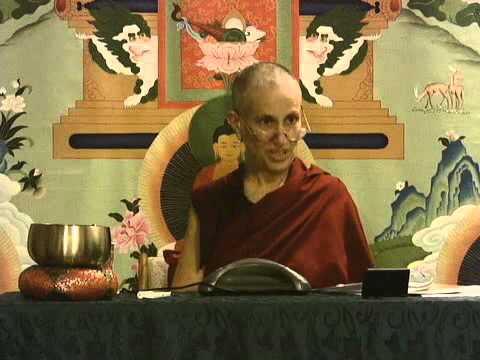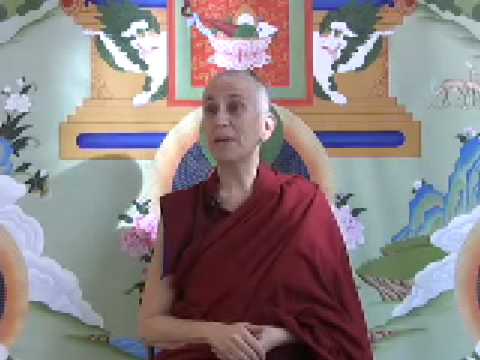Verse 32-5: Who is sick?
Part of a series of talks on the 41 Prayers to Cultivate Bodhicitta from the Avatamsaka Sutra (the Flower Ornament Sutra).
- Considering who is feeling pain or discomfort
- Considering who is the owner of the body that is in pain
- The ultimate purpose of the Dharma
“May all beings be free from illnesses.”
This is the prayer of the bodhisattva when seeing someone sick.
Another way to work with the body is, when you are getting down about your body, or your body is painful, to ask, “Who is feeling this.” In other words, look for the “I” that has the painful feeling. If you’re judging your body: “It’s too this, it’s too that,” who is the “I” that is thinking that thought? That’s for focusing on who is the “I” as the agent. We have the “I” and mine.
You can also focus on it in terms of focusing on the “mine” part. “Whose body is this?” In other words, who is the owner of this body? You can do it either way. “Who is the one feeling this? Who is the one having this judgmental thought?” Or, “Whose body is this?” Then trying and find the self. The “I” that’s at the center of the whole mess that is going on in your mind about the body. The body is just doing what bodies do. Getting old, and sick, and dying. It’s our reaction to that that spins the mind.
The Dharma is not just to calm our reaction to what the body is doing so that we can go through samsara feeling better. The Dharma does that, but that’s not the ultimate purpose of the Dharma. The ultimate purpose of the Dharma is to get rid of the causes that propel this kind of body to start with. When we think about “whose body is this” or “who is the ‘I’ that’s feeling this,” depending upon our motivation or intention, that meditation can accomplish both purposes leading to liberation as well as calming the mind right now.
Venerable Thubten Chodron
Venerable Chodron emphasizes the practical application of Buddha’s teachings in our daily lives and is especially skilled at explaining them in ways easily understood and practiced by Westerners. She is well known for her warm, humorous, and lucid teachings. She was ordained as a Buddhist nun in 1977 by Kyabje Ling Rinpoche in Dharamsala, India, and in 1986 she received bhikshuni (full) ordination in Taiwan. Read her full bio.


